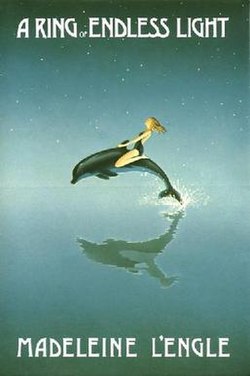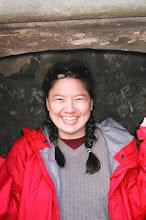Advances in ant systematics (Hymenoptera: Formicidae): homage to E. O. Wilson – 50 years of contributions
Roy. R. Snelling, Brian L. Fisher, and Philip S. Ward (Editors.)
Memoirs of the American Entomological Institute, Volume 80
American Entomological Institute.
Gainesville, FL, September 2007
Slightly more than fifty years ago a significant advance in the systematics of ants was published - E. O. Wilson's doctoral thesis: A monographic revision of the ant genus Lasius (Wilson, 1955). This was not quite Ed's first paper on formicid systematics (Wilson, 1951, 1952), but it was the first comprehensive revision of an ant genus based on modern or Mayrian taxonomic principles. Ant systematics had truly entered the modern era only five years earlier with W. S. Creighton's revolutionary Ants of North America (Creighton, 1950). Creighton emphasized the need for species and subspecies based on solid morphological features and sound field experience. Creighton's work clearly influenced Borgmeier's massive revision of the New World army ants (1955). Enlarging upon Creighton's philosophical understanding that taxa must be based on secure morphological differentiation and that species must be understood as populations subject to (often) considerable geographic variation, Wilson's revision, following on Creighton's monumental accomplishment, effectively ended the era of such giants as Forel, Emery, and Wheeler. Each of these workers had described numerous subspecies and varieties, often from inadequate samples; these new taxa were all too frequently ascribed to species that were, themselves, poorly known.
Creighton had dismissed the varietal form, the backbone of the quadrinomial system then applied to ants. Some of the "varieties" he did continue to recognize as geographic variants or subspecies, usually based on morphological characteristics; most, however, were consigned to oblivion as nothing more than trivial sporadic variations within a population. Only five years later, Wilson took the next step and dispensed with subspecies, having determined that most ceased to exist as taxonomically meaningful entities when entire populations were critically examined.
I first began studying ants, as part of my larger interest in the aculeate Hymenoptera, in the years just prior to the appearance of Creighton's book. Suffice to say that when I first realized just how chaotic ant taxonomy was, I promptly determined not to work on ants. Some years later I acquired a copy of Ants of North America, but by then I was deeply involved with bees and social wasps, and had only a casual interest in ants. It was not until about 1960 that I became more involved with ants. Ants of North America was supplemented by reprints of more recent works, including Ed's Lasius monograph. Suddenly, ant systematics, a previously arcane welter of confusing subspecies and varieties and wholly unworkable keys, had become comprehensible! Those individuals entering ant systematics over the past half century cannot begin to comprehend the profound significance of these two publications. But now, fifty years later, we can look back and appreciate Ed's contributions, examined more fully in the following paper, to our field of endeavor.
The present volume, containing contributions from ant taxonomists the world over, began as a chance email interchange between Jack Longino and myself in the spring of 2003. Basically, it was something on the order of (from Jack): "Maybe we should put together a Festschrift for the Old Boy (i.e., Ed)." My response was, "Not a bad idea." We left it at that and signed off. The idea didn't die there. Phil Ward, who happened to be visiting the LACM at the time, and I started talking about it and shortly agreed in principle to explore the possibility. I immediately began contacting colleagues and potential contributors; most were enthusiastic and agreed to provide papers. A lot of hard work by Ed's colleagues from around the world has resulted in this volume. There are a couple of thoughtful essays, one from Barry Bolton, another from Bob Taylor. Another paper examines the great diversity of ant species in arid lands in Australia. But the papers submitted here are primarily taxonomic/systematic in nature.
All of the papers included herein have been reviewed by the editors and, sometimes also by the usual battery of "anonymous reviewers." I wish to thank two of my colleagues at the Natural History Museum of Los Angeles County, Brian V. Brown and Fred S. Truxal, for their encouragement. Particular thanks are tendered to my son and grandson, Gordon and James, respectively, and to Weiping Xie and Bill Mertz who came to my assistance many times when my ineptitude with computer technology became all too evident. And finally, I and my co-editors, Phil Ward and Brian Fisher, wish to express our profound gratitude to all the authors whose contributions made this volume possible.
Roy. R. Snelling
- Snelling, R. R. 2007. Preface, pp 1-2. In Snelling, R. R., B. L. Fisher, and P. S. Ward (eds) Advances in ant systematics (Hymenoptera: Formicidae): homage to E. O. Wilson – 50 years of contributions. Memoirs of the American Entomological Institute, 80.(pdf) [plazi]
- Ward, P. S. 2007. Edward O. Wilson and his contributions to ant systematics, pp 3-7. In Snelling, R. R., B. L. Fisher, and P. S. Ward (eds) Advances in ant systematics (Hymenoptera: Formicidae): homage to E. O. Wilson – 50 years of contributions. Memoirs of the American Entomological Institute, 80.(pdf) [plazi]
- Alpert, G. D. 2007. A review of the ant genus Metapone Forel from Madagascar, pp 8-18. In Snelling, R. R., B. L. Fisher, and P. S. Ward (eds) Advances in ant systematics (Hymenoptera: Formicidae): homage to E. O. Wilson – 50 years of contributions. Memoirs of the American Entomological Institute, 80.(pdf) [plazi]
- Andersen, A. N. 2007. Ant diversity in arid Australia: a systematic overview, pp 19-51. In Snelling, R. R., B. L. Fisher, and P. S. Ward (eds) Advances in ant systematics (Hymenoptera: Formicidae): homage to E. O. Wilson – 50 years of contributions. Memoirs of the American Entomological Institute, 80.(pdf) [plazi]
- Bolton, B. 2007. How to conduct large-scale taxonomic revisions in Formicidae, pp 52-71. In Snelling, R. R., B. L. Fisher, and P. S. Ward (eds) Advances in ant systematics (Hymenoptera: Formicidae): homage to E. O. Wilson – 50 years of contributions. Memoirs of the American Entomological Institute, 80.(pdf) [plazi]
- Brandão, C. R. F. and A. J. Mayhé-Nunes. 2007. A phylogenetic hypothesis for the Trachymyrmex species groups, and the transition from fungus-growing to leaf-cutting in the Attini, pp 72-88. In Snelling, R. R., B. L. Fisher, and P. S. Ward (eds) Advances in ant systematics (Hymenoptera: Formicidae): homage to E. O. Wilson – 50 years of contributions. Memoirs of the American Entomological Institute, 80.(pdf) [plazi]
- Cover, S. P. and M. Deyrup. 2007. A new ant genus from the southwestern United States, pp 89-99. In Snelling, R. R., B. L. Fisher, and P. S. Ward (eds) Advances in ant systematics (Hymenoptera: Formicidae): homage to E. O. Wilson – 50 years of contributions. Memoirs of the American Entomological Institute, 80.(pdf) [plazi]
- Deyrup, M. and S. P. Cover. 2007. A new species of Crematogaster from the pinelands of the southeastern United States, pp 100-112. In Snelling, R. R., B. L. Fisher, and P. S. Ward (eds) Advances in ant systematics (Hymenoptera: Formicidae): homage to E. O. Wilson – 50 years of contributions. Memoirs of the American Entomological Institute, 80.(pdf) [plazi]
- Espadaler, X. 2007. The ants of El Hierro (Canary Islands), pp 113-127. In Snelling, R. R., B. L. Fisher, and P. S. Ward (eds) Advances in ant systematics (Hymenoptera: Formicidae): homage to E. O. Wilson – 50 years of contributions. Memoirs of the American Entomological Institute, 80.(pdf) [plazi]
- Fernández, F. 2007. Two new South American species of Monomorium Mayr with taxonomic notes on the genus, pp 128-145. In Snelling, R. R., B. L. Fisher, and P. S. Ward (eds) Advances in ant systematics (Hymenoptera: Formicidae): homage to E. O. Wilson – 50 years of contributions. Memoirs of the American Entomological Institute, 80.(pdf) [plazi]
- Fisher, B. L. 2007. A new species of Probolomyrmex from Madagascar, pp 146-152. In Snelling, R. R., B. L. Fisher, and P. S. Ward (eds) Advances in ant systematics (Hymenoptera: Formicidae): homage to E. O. Wilson – 50 years of contributions. Memoirs of the American Entomological Institute, 80.(pdf) [plazi]
- Francoeur, A. 2007. The Myrmica punctiventris and M. crassirugis species groups in the Nearctic region, pp 153-145. In Snelling, R. R., B. L. Fisher, and P. S. Ward (eds) Advances in ant systematics (Hymenoptera: Formicidae): homage to E. O. Wilson – 50 years of contributions. Memoirs of the American Entomological Institute, 80.(pdf) [plazi]
- Kohout, R. J. 2007. Revision of the subgenus Aulacomyrma Emery of the genus Polyrhachis F. Smith, with descriptions of new species, pp 186-253. In Snelling, R. R., B. L. Fisher, and P. S. Ward (eds) Advances in ant systematics (Hymenoptera: Formicidae): homage to E. O. Wilson – 50 years of contributions. Memoirs of the American Entomological Institute, 80.(pdf) [plazi]
- Lattke, J. E., F. Fernández and E. E. Palacio G.. 2007. Identification of the species of Gnamptogenys Roger in the Americas, pp 254-270. In Snelling, R. R., B. L. Fisher, and P. S. Ward (eds) Advances in ant systematics (Hymenoptera: Formicidae): homage to E. O. Wilson – 50 years of contributions. Memoirs of the American Entomological Institute, 80.(pdf) [plazi]
- Longino, J. T. and F. Fernández. 2007. Taxonomic review of the genus Wasmannia, pp 271-289. In Snelling, R. R., B. L. Fisher, and P. S. Ward (eds) Advances in ant systematics (Hymenoptera: Formicidae): homage to E. O. Wilson – 50 years of contributions. Memoirs of the American Entomological Institute, 80.(pdf) [plazi]
- McArthur, A. J. 2007. A key to Camponotus Mayr of Australia, pp 290-351. In Snelling, R. R., B. L. Fisher, and P. S. Ward (eds) Advances in ant systematics (Hymenoptera: Formicidae): homage to E. O. Wilson – 50 years of contributions. Memoirs of the American Entomological Institute, 80.(pdf) [plazi]
- Ogata, K. and H. Okido. 2007. Revision of the ant genus Perissomyrmex with notes on the phylogeny of the tribe Myrmecinini, pp 352-369. In Snelling, R. R., B. L. Fisher, and P. S. Ward (eds) Advances in ant systematics (Hymenoptera: Formicidae): homage to E. O. Wilson – 50 years of contributions. Memoirs of the American Entomological Institute, 80.(pdf) [plazi]
- Schoedl, 2007. Revision of Australian Meranoplus: the Meranoplus diversus group, pp 370-424. In Snelling, R. R., B. L. Fisher, and P. S. Ward (eds) Advances in ant systematics (Hymenoptera: Formicidae): homage to E. O. Wilson – 50 years of contributions. Memoirs of the American Entomological Institute, 80.(pdf) [plazi]
- Schultz, T. R. 2007. The fungus-growing ant genus Apterostigma in Dominican amber, pp 425-436. In Snelling, R. R., B. L. Fisher, and P. S. Ward (eds) Advances in ant systematics (Hymenoptera: Formicidae): homage to E. O. Wilson – 50 years of contributions. Memoirs of the American Entomological Institute, 80.(pdf) [plazi]
- Shattuck, S. O. and N. J. Barnett. 2007. Revision of the ant genus Mayriella, pp 437-458. In Snelling, R. R., B. L. Fisher, and P. S. Ward (eds) Advances in ant systematics (Hymenoptera: Formicidae): homage to E. O. Wilson – 50 years of contributions. Memoirs of the American Entomological Institute, 80.(pdf) [plazi]
- Snelling, G. C. and R. R. Snelling. 2007. New synonymy, new species, new keys to Neivamyrmex army ants of the United States, pp 459-550. In Snelling, R. R., B. L. Fisher, and P. S. Ward (eds) Advances in ant systematics (Hymenoptera: Formicidae): homage to E. O. Wilson – 50 years of contributions. Memoirs of the American Entomological Institute, 80.(pdf) [plazi]
- Snelling, R. R. 2007. A review of the arboreal Afrotropical ant genus Axinidris, pp 551-579. In Snelling, R. R., B. L. Fisher, and P. S. Ward (eds) Advances in ant systematics (Hymenoptera: Formicidae): homage to E. O. Wilson – 50 years of contributions. Memoirs of the American Entomological Institute, 80.(pdf) [plazi]
- Taylor, R. W. 2007. Bloody funny wasps! Speculations on the evolution of eusociality in ants, pp 580-609. In Snelling, R. R., B. L. Fisher, and P. S. Ward (eds) Advances in ant systematics (Hymenoptera: Formicidae): homage to E. O. Wilson – 50 years of contributions. Memoirs of the American Entomological Institute, 80.(pdf) [plazi]
- Trager, J. C., J. A. MacGown and M. D. Trager. 2007. Revision of the Nearctic endemic Formica pallidefulva group, pp 610-636. In Snelling, R. R., B. L. Fisher, and P. S. Ward (eds) Advances in ant systematics (Hymenoptera: Formicidae): homage to E. O. Wilson – 50 years of contributions. Memoirs of the American Entomological Institute, 80.(pdf) [plazi]
- Ward, P. S. 2007. The ant genus Leptanilloides: discovery of the male and evaluation of phylogenetic relationships based on DNA sequence data, pp 637-649. In Snelling, R. R., B. L. Fisher, and P. S. Ward (eds) Advances in ant systematics (Hymenoptera: Formicidae): homage to E. O. Wilson – 50 years of contributions. Memoirs of the American Entomological Institute, 80.(pdf) [plazi]
- Yamane, S. 2007. Pachycondyla nigrita and related species in Southeast Asia, pp 650-663. In Snelling, R. R., B. L. Fisher, and P. S. Ward (eds) Advances in ant systematics (Hymenoptera: Formicidae): homage to E. O. Wilson – 50 years of contributions. Memoirs of the American Entomological Institute, 80.(pdf) [plazi]
- Yoshimura, M. and K. Onoyama. 2007. A new sibling species of the genus Strumigenys, with a redefinition of S. lewisi Cameron, pp 664-690. In Snelling, R. R., B. L. Fisher, and P. S. Ward (eds) Advances in ant systematics (Hymenoptera: Formicidae): homage to E. O. Wilson – 50 years of contributions. Memoirs of the American Entomological Institute, 80.(pdf) [plazi]
 Sometimes my news aggregator collects articles that have nothing to do with entomology. Today I was psyched about that as I learned about a fabulous astronomical body called the Magnificent Ant Nebula:
Sometimes my news aggregator collects articles that have nothing to do with entomology. Today I was psyched about that as I learned about a fabulous astronomical body called the Magnificent Ant Nebula:






 Kari Ryder Wilkie bloggt im
Kari Ryder Wilkie bloggt im 









